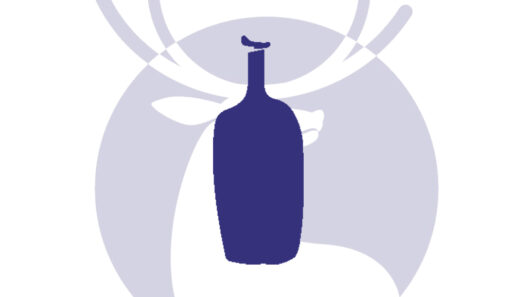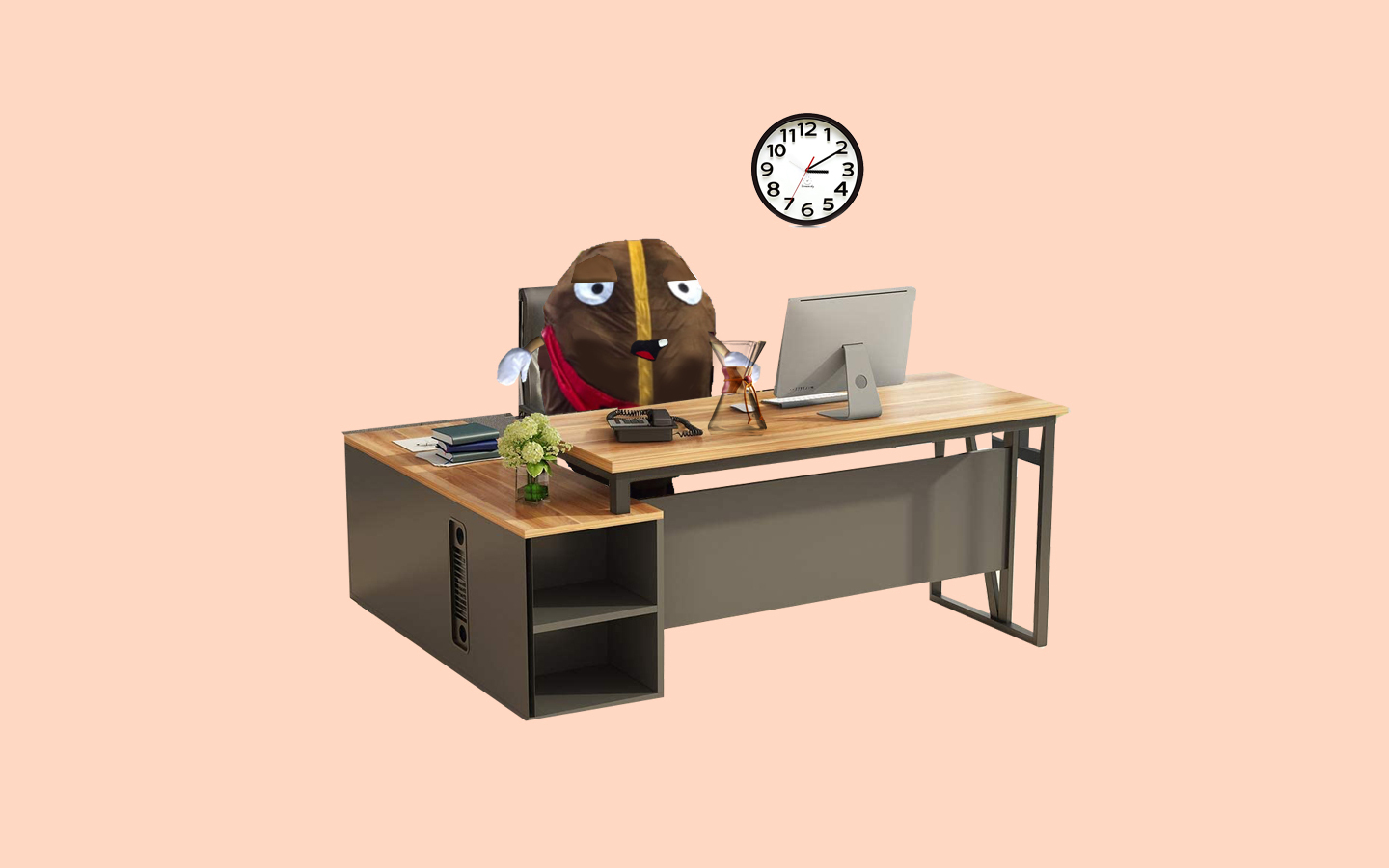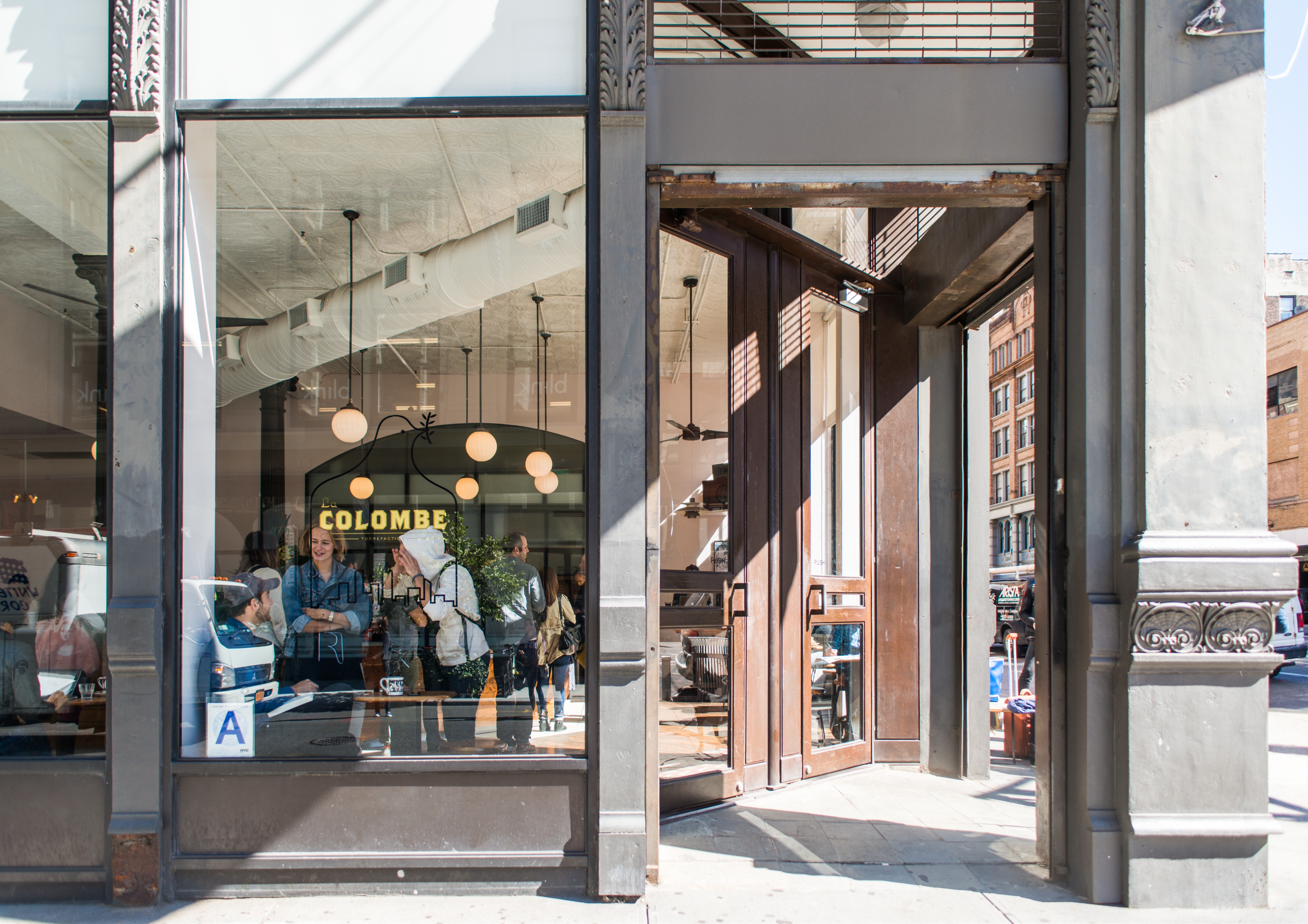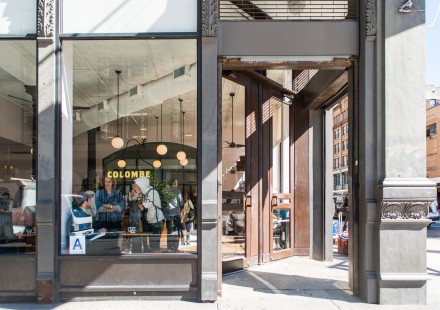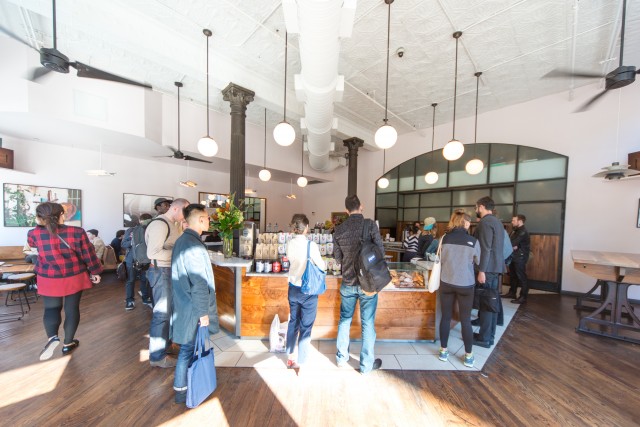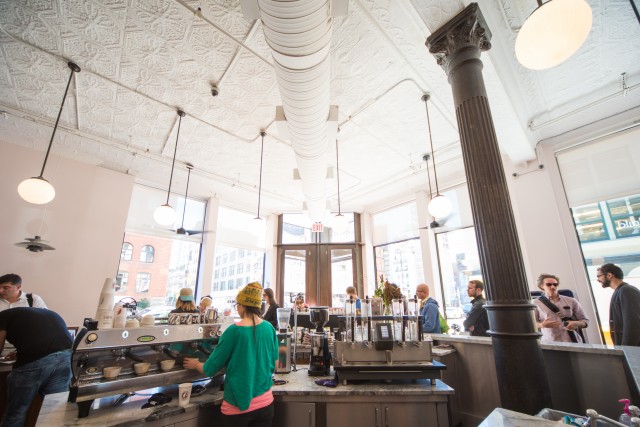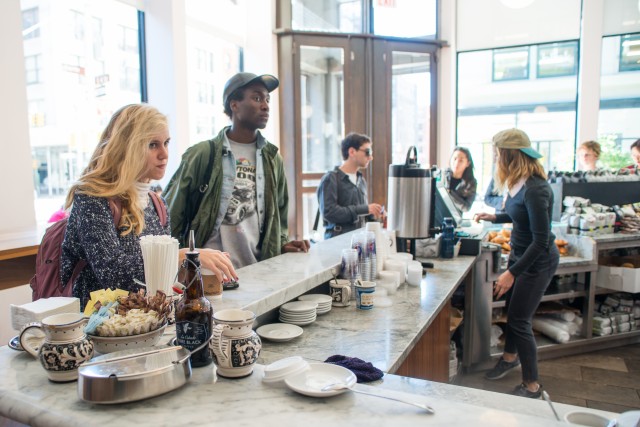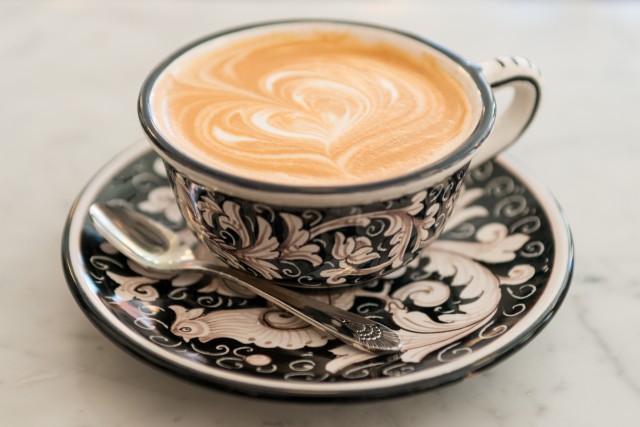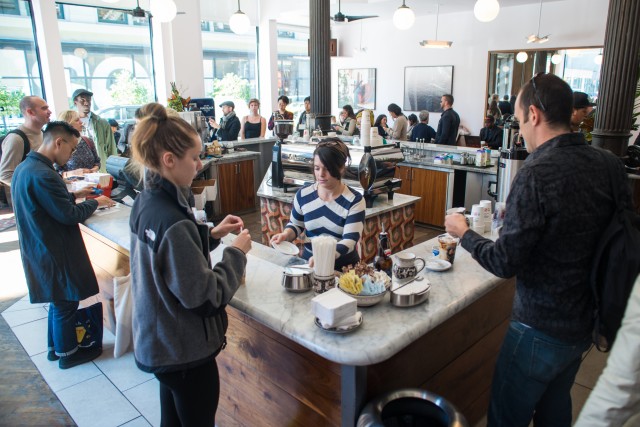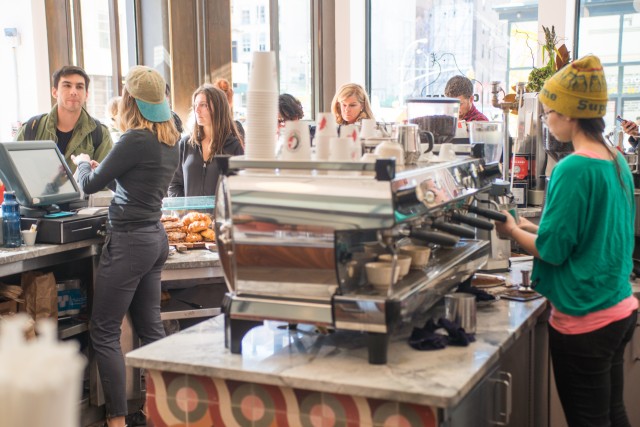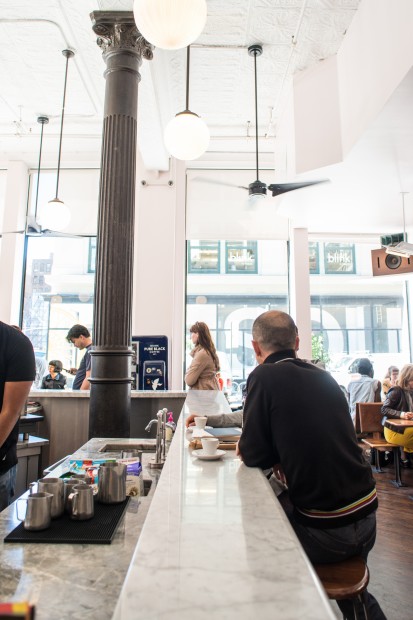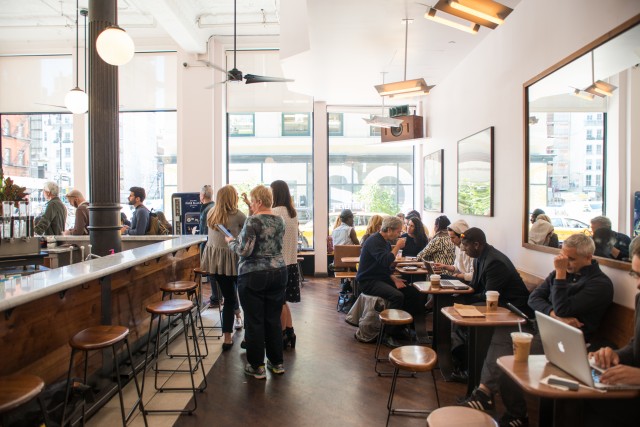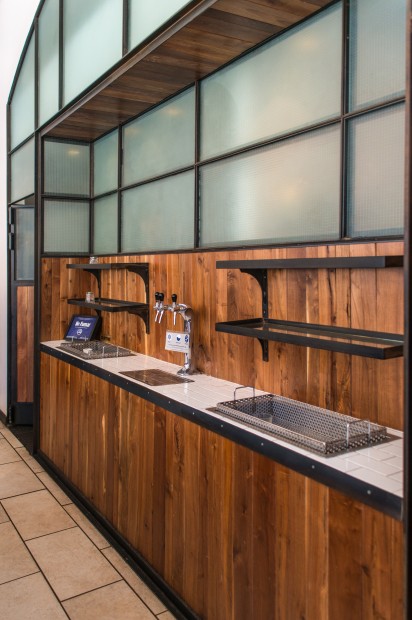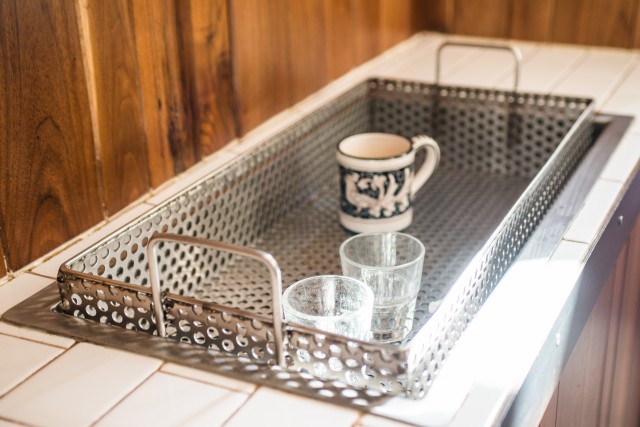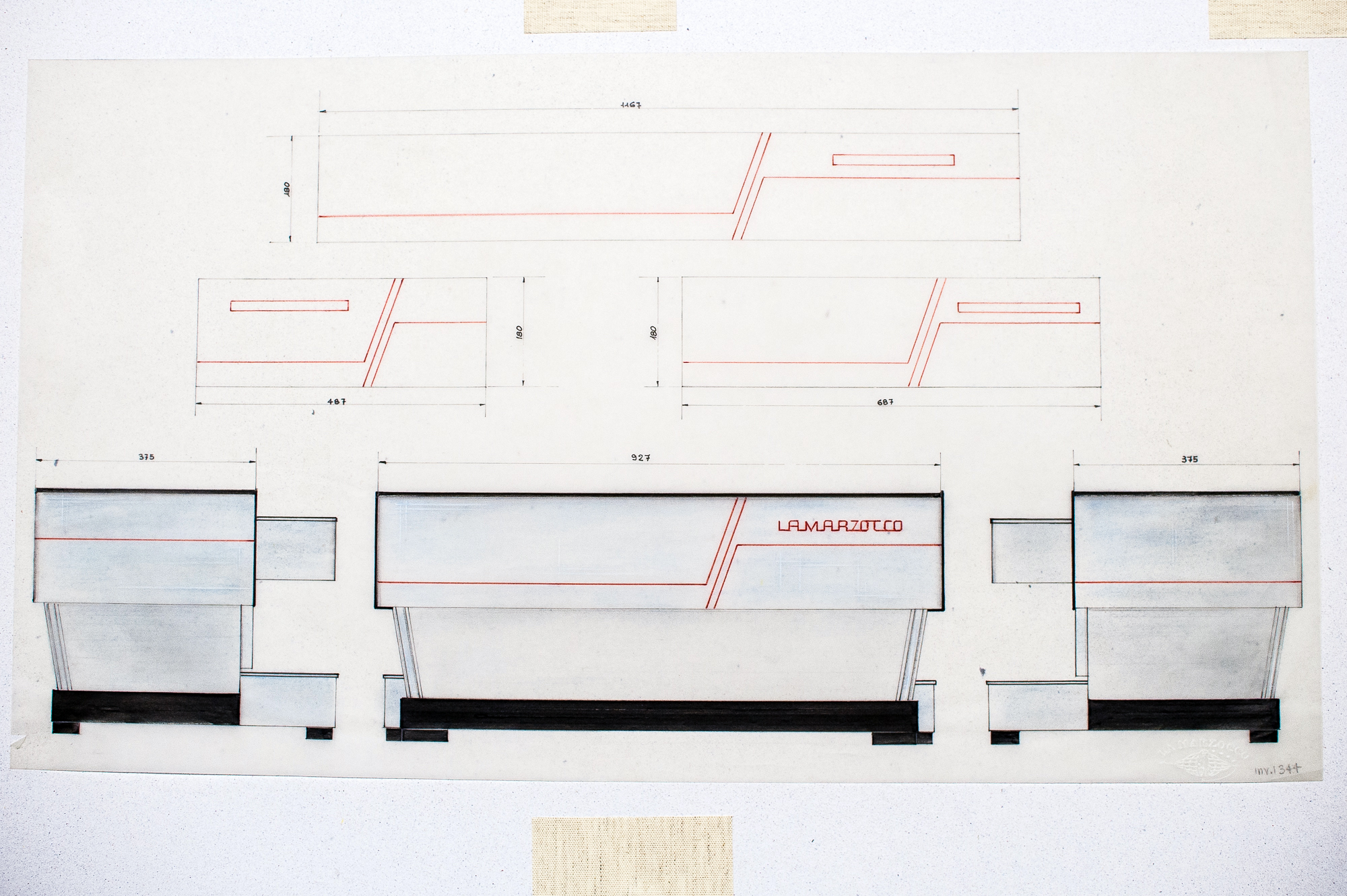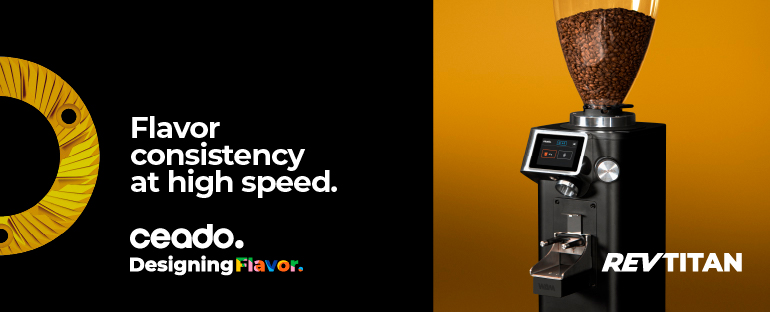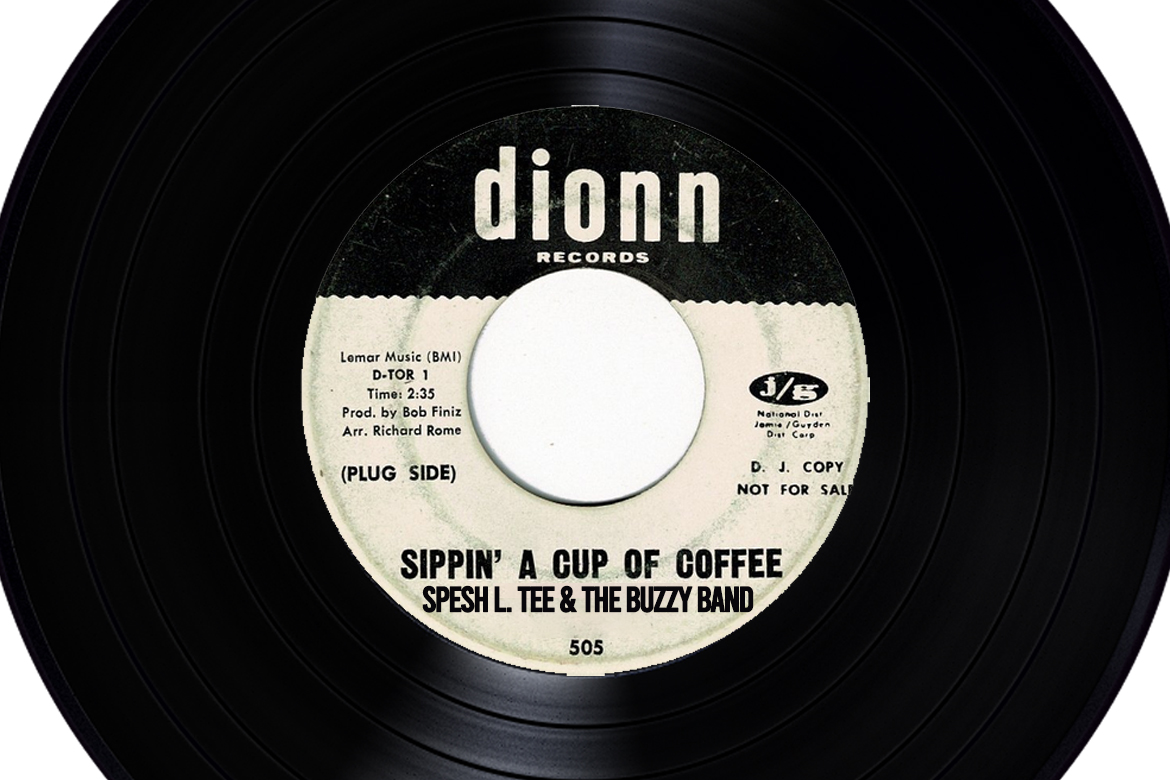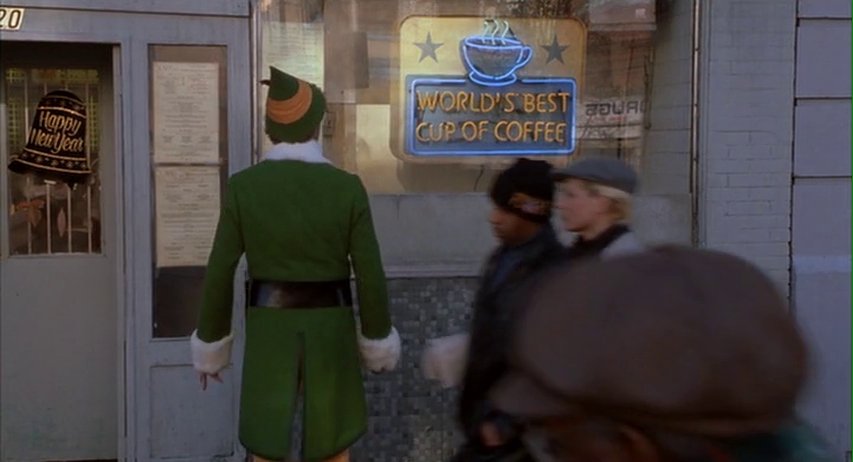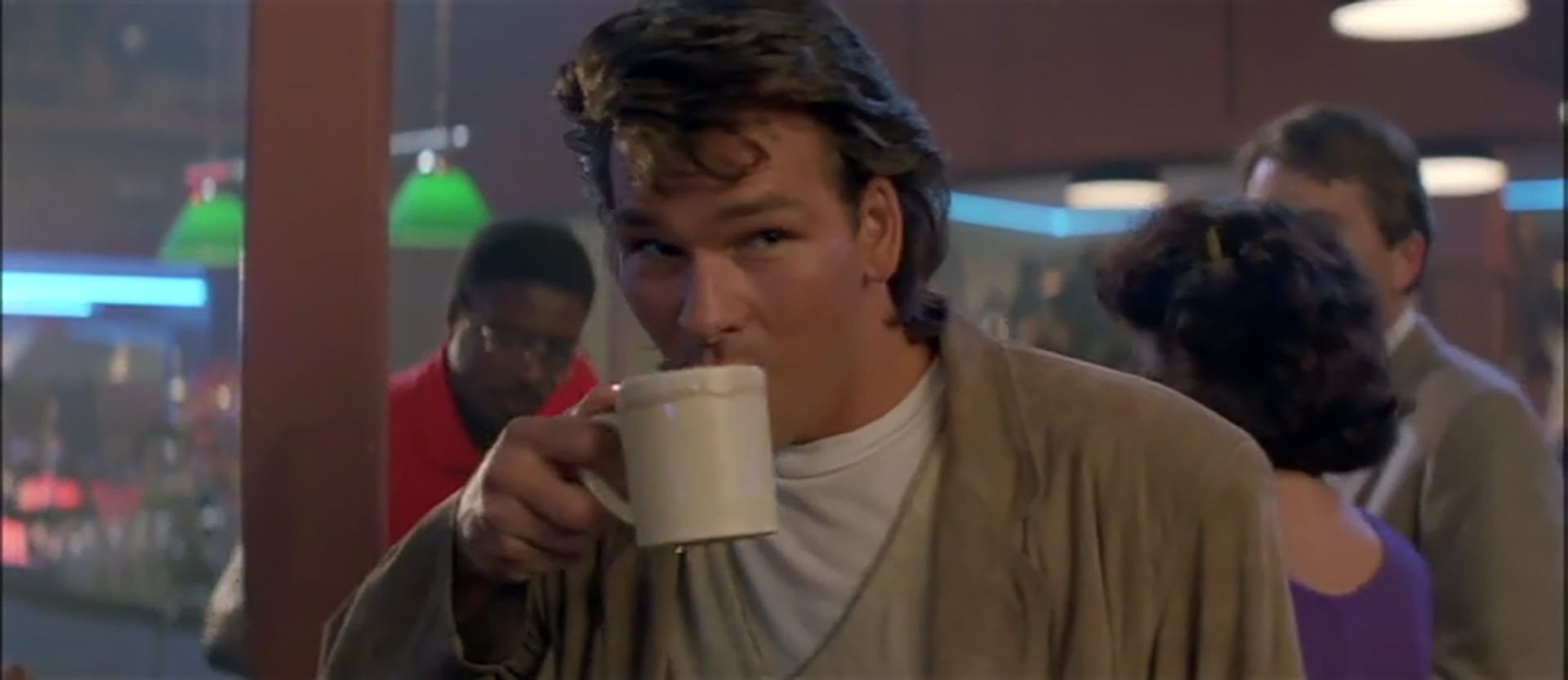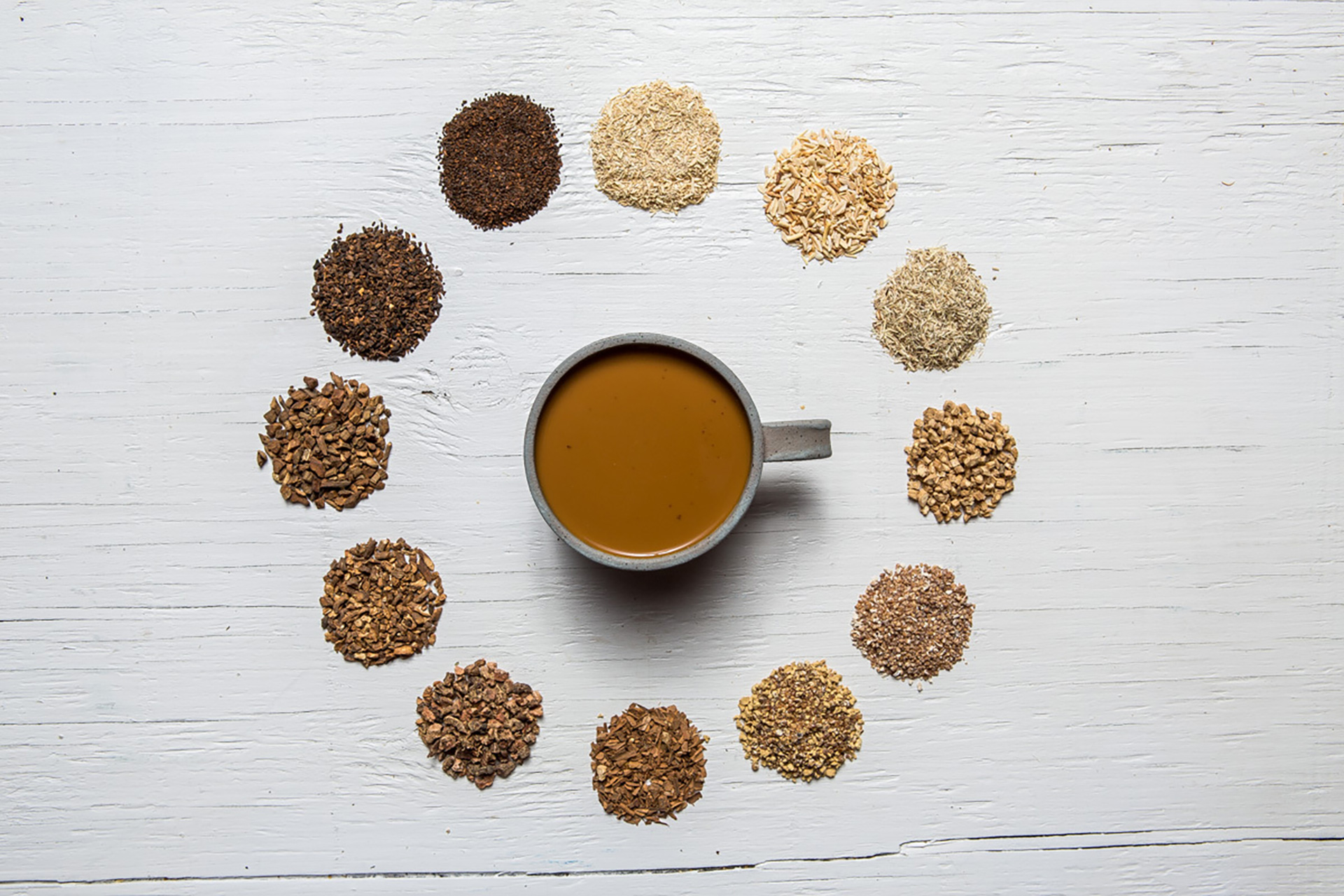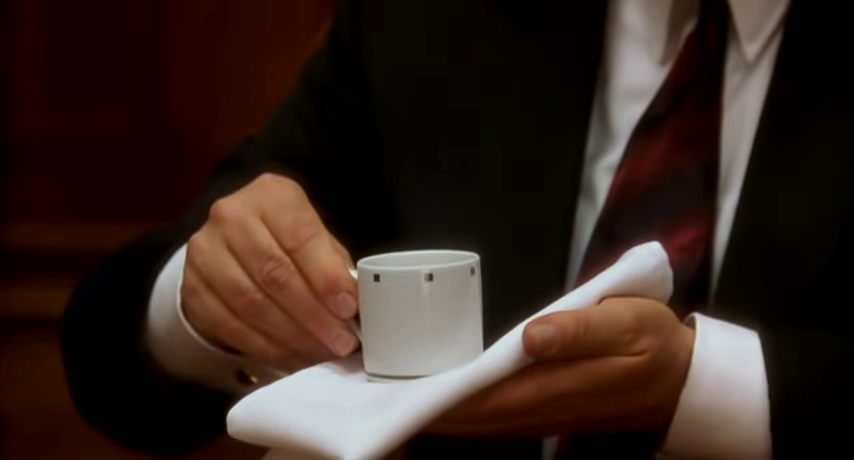It’s 9:30AM on a Monday. The sun is starting to really stream in through the windows, and there is a 15 person deep line snaking all the way through the café. The morning rush. It’s all happening.
This can be a hectic, high-energy time for a café–especially in Manhattan–with drink orders piling up, traffic jams of customers and lots of shouting of orders. Yet La Colombe’s flagship NoHo location is perfectly calm.
There is an organic flow inherent to the service system at this cafe. It scales so strongly and degrades so gracefully. Even more impressive is the way this cafe manages to do all that while being transparent, intelligible and comforting to the customer. It’s actually relaxing to watch this place field a rush, both as a barista and as a customer.
In terms of aesthetic and especially functional design, La Colombe NoHo is one of my personal favorite cafes in the world.
Let’s get this out of the way first though: La Colombe’s approach to coffee is not everyone’s cup of tea. The company’s founder, Todd Carmichael, is a famously divisive figure in the specialty coffee world. Perhaps quixotically, he’s also one of specialty coffee’s most important public ambassadors, as the host of the Travel Channel’s “Dangerous Grounds” (most of which we enjoyed watching) and an occasional coffee blogger for Esquire (most of which was truly painful to read). People who work in specialty coffee have strong opinions about La Colombe; for some, those opinions are strongly negative.
But La Colombe is not designed for people who work in specialty coffee. Outside of the specialty coffee cult, there really are a lot of folks who love La Colombe’s old-school dark roasts and “Italian” preparation style. It is not a matter of public error that La Colombe holds spots #3, #6 and #7 on Yelp’s top Manhattan coffee shop listings. It is not an accident that La Colombe NoHo is the #4 most Foursquare’d cafe in America. People love the big “bold” Fetco coffee profile. They love their lattes the way one does love twelve ounces of excellently steamed milk. And most of all, people really just freak out over La Colombe’s very popular iced coffee preparation.
To make it, the barista takes a 16oz plastic cup full of ice, pours hot coffee from an urn on top, throws in a double shot of espresso, and adds more ice. Black, it’s overwhelmingly bitter, “strong” and roasty. But when you add a sizable amount of milk and sugar, it is one of the more enjoyable iced east-coast “regular” style coffees I’ve had. With milk and sugar added, it is way more intensely flavorful and balanced than the brews at Dunkin Donuts or Starbucks, and even the brews at some more “3rd-wave” specialty shops. It’s coffee that really tastes like it’s putting a dent in your early-morning caffeine withdrawals.
There are plenty of coffee professionals who will say “stands up really well to milk and sugar” is faint praise indeed. But for a huge swath of customers, it’s the highest praise you can give. They crave it, they start every morning with it, they love it. I don’t intend this feature to be a dissertation on the occasional merits of cream and sugar in the specialty cafe setting. It’s been fought over and done to death. There are many excellent cafes that choose not to offer cream and sugar, as a matter of pride or by way of supporting the integrity of the drinks they serve. Let’s leave it for what it is — an individual choice that each cafe makes. Hooray for freedom.
But it’s a fascinating counterpoint: La Colombe’s bombastic, polarizing approach to coffee, compared to their polished, elegant approach to design.
Twenty years ago Todd Carmichael and his business partner Jean Philippe (JP) Iberti were running the Torrefazione Italia Pioneer Square location in Seattle. I was a toddler then, and when my mom would take me on excursions to that neighborhood, she would stop in and get what was at the time one of the best coffees in the city, in one of Torrefazione Italia’s classic Deruta Raffaellesco ceramic cups.
All these years later, the cups have been upgraded to a stunning custom black and white Raffaellesco pattern commissioned in Deruta specifically for La Colombe’s NYC locations. Their coffee preparation may not have changed much since then, but Mr. Carmichael and JP have clearly spent a lot of that time focusing on the delicate art of actually serving people coffee.
The central brilliance of the NoHo café is the way that wrapping the service flow all the way around the bar in the round activates the entire space, creating distinct social and service zones. Standard café designs have a tendency to create pockets of dead-space or awkward milling-about zones, especially in very large spaces. La Colombe NoHo avoids this by carefully, intuitively guiding customers through every step of the interaction.
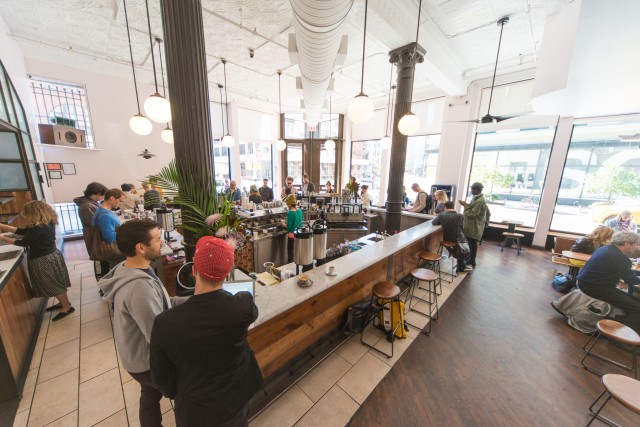
Stretching the line of customers from the register around the front of the bar immediately solves a few problems. It’s quite clear where you should line up as a customer–the line is literally the first thing you walk into as you enter the space. And because the line is wrapped around the front corner of the café and all service flows counter-clockwise, there is never a situation where customers who have received their drink have to squeeze through a scrum of people to exit, sit down at a table, or get to the condiment bar.
In fact, La Colombe uses their “condiment bar” in a particularly genius way to ensure this uniform counter-clockwise flow. When you order a drink, the register or expediter person walks you down to the furthest-clockwise open spot on the back corner of the bar and puts up a saucer with the appropriate accoutrements: saucer and demitasse spoon for hot for-here drinks; long-handled spoon, clear lid and straw for iced drinks, etc.
This naturally draws the customer out of the way of the line and into the back corner of the space, demonstrates a level of care and attention to detail, keeps the condiment area from getting messy, and most crucially, lets customers know exactly where their drink is going to come up.
With this system, there is never the need to shout out a completed drink order, and there is never a question of “is this my drink?” A customer can tell how much longer they have to wait for their drink just by looking at how many drink settings are lined up before them. These may seem like small things, but any seasoned barista can tell you that these three issues are the primary sources of confusion, stress, and conflict for both customers and baristas.
All this walking to-and-fro may seem like it would seriously slow things down, but they have neatly solved that problem with their central barista island. Because the line stretches in front of the island, the skilled barista can take orders over the machine as they make drinks, keeping their production queue full without the need to be fed by the register. This frees the register person to take their time in getting pastries, ringing people through and putting up settings on the bar. Further, because the barista is able to work through the line at their own pace, they are often able to have drinks completed by the time a customer reaches the register or only shortly thereafter. The detached pacing of the register and drink lines also greatly increases the efficacy of working a third expediter position, since the expediter is totally free to bounce between whichever position needs help at a given moment.
This flexibility is not just great for customer throughput–it also gives the staff a good deal of freedom to socialize with customers as they work. At the Nordic Barista Cup I spoke about how enabling timing flexibility of staff tasks and forcing the customer to stand across from the staff for as long as possible enables greater socializing, and La Colombe NoHo’s design is an excellent case in point. Because no position is rigidly necessary for sustained production flow, and because staff circulate through different areas on the floor, the staff are able to better prioritize socializing and inter-leave it with their production tasks. Over the course of an hour, I watched the woman working the expediter position carry on a sustained conversation with a regular seated at the back bar while simultaneously keeping production flowing. This ability to form connections with customers clearly pays off: there is a core group of very dedicated regulars who come in to this shop, and I watched many of them be greeted by the barista over the machine the moment they walked in the door.
The central bar-island layout is not just good for staff-customer socializing. The way the bar and line activates and divides the space creates distinct social zones for customers appropriate to different desired usages of the café. Along the back wall you have a bunch of two-person tables, perfect for people who want to camp out for a meeting or a laptop session. The sedentary energy of this section does not penetrate into the rest of the café because of the double insulation of the more transitory bar seating and the animation of the line when it reaches that far back.
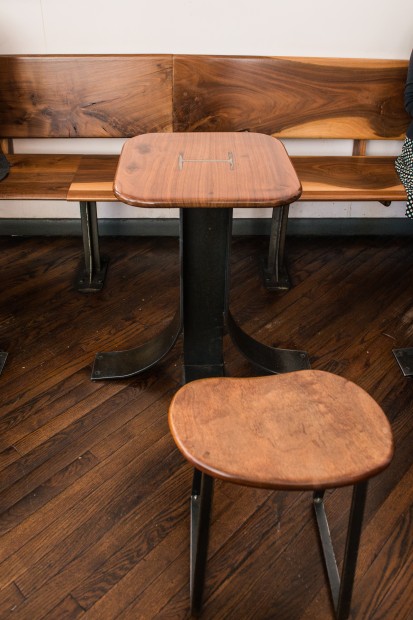
For people who want to stop in for a quick chat with a friend or a contemplative solo easing into their day over a coffee and pastry, the stools along the back bar provide an informal space that is energized by proximity to the hustle of the bar production and perfect for people watching. In the windows around the edges of the café you have two and four-person tables that strike an intermediate note: more sedentary because of the way the line insulates them from the production hustle, but still more animated than the back section because they are not in one monolithic clump and have traffic constantly passing by them.
A lot of very smart decisions were made in the seating design of La Colombe NoHo, but the attention to detail in design does not stop there. The fit and finish of the café is impressive, and little touches like the tap offering sparkling water, chilled, and room temperature water do a lot to round out the experience. It feels like every need a customer may have in the space has already been considered and addressed in a tasteful way, right down to the removable, draining bus-tub cages.
La Colombe NoHo addresses the challenges inherent in volume coffee service with a calm, capable assurance. Walk into the café and you can feel that sense of gracefully contained activity beating out from the central bar, lending you a bit of its poise and energy as you fuel up and go out to face your day. To my mind, this is ultimately the goal of a café: taking in the vibrant energy of the city, building on it, and reflecting it back in a more refined way.
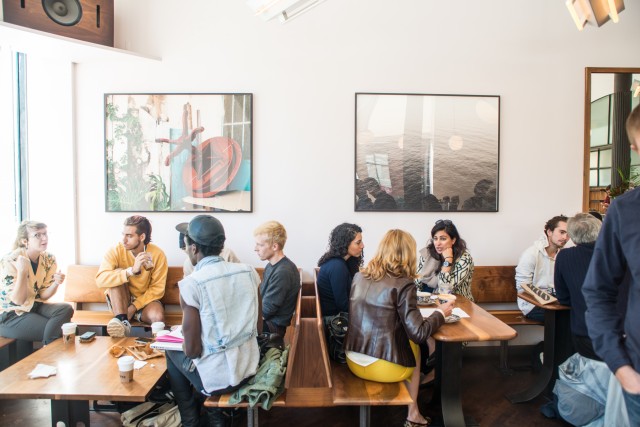
I disagree with some of La Colombe’s choices when it comes to coffee sourcing, roasting and preparation. But in the same breath, I think they’ve managed to create easily one of the best cafés in New York, if not all of North America. Though there are plenty of cappuccinos I would rather drink in this city, one of my favorite ways to pass a morning is seated at La Colombe NoHo’s back bar, lingering over a cappuccino in one of those gorgeous cups, feeling the energy of the room ramp up as the rush gets going, hearing the buzz of myriad conversations thrumming in the background, and watching the fashionable crowds of people coming in crumpled and tired and leaving sharper and happier.
It’s easy to see why people love La Colombe NoHo. The attention to detail is magnetic. The café accommodates myriad different social usages. The service flow is refined and deeply functional. The space is beautiful. And the coffee is very well suited to how a majority of their clientele drinks it. It’s a recipe for success that legions of their fans love, and it’s worth understanding how they do it, no matter what you think of what’s in the cup.
Alex Bernson (@AlexBernson) is the Assistant Editor at Sprudge.com. Read more Bernson here.
Original photography by D. Robert Wolcheck (@drw) for Sprudge.com. You can find more of his work on his website at http://drobertwolcheck.com.





